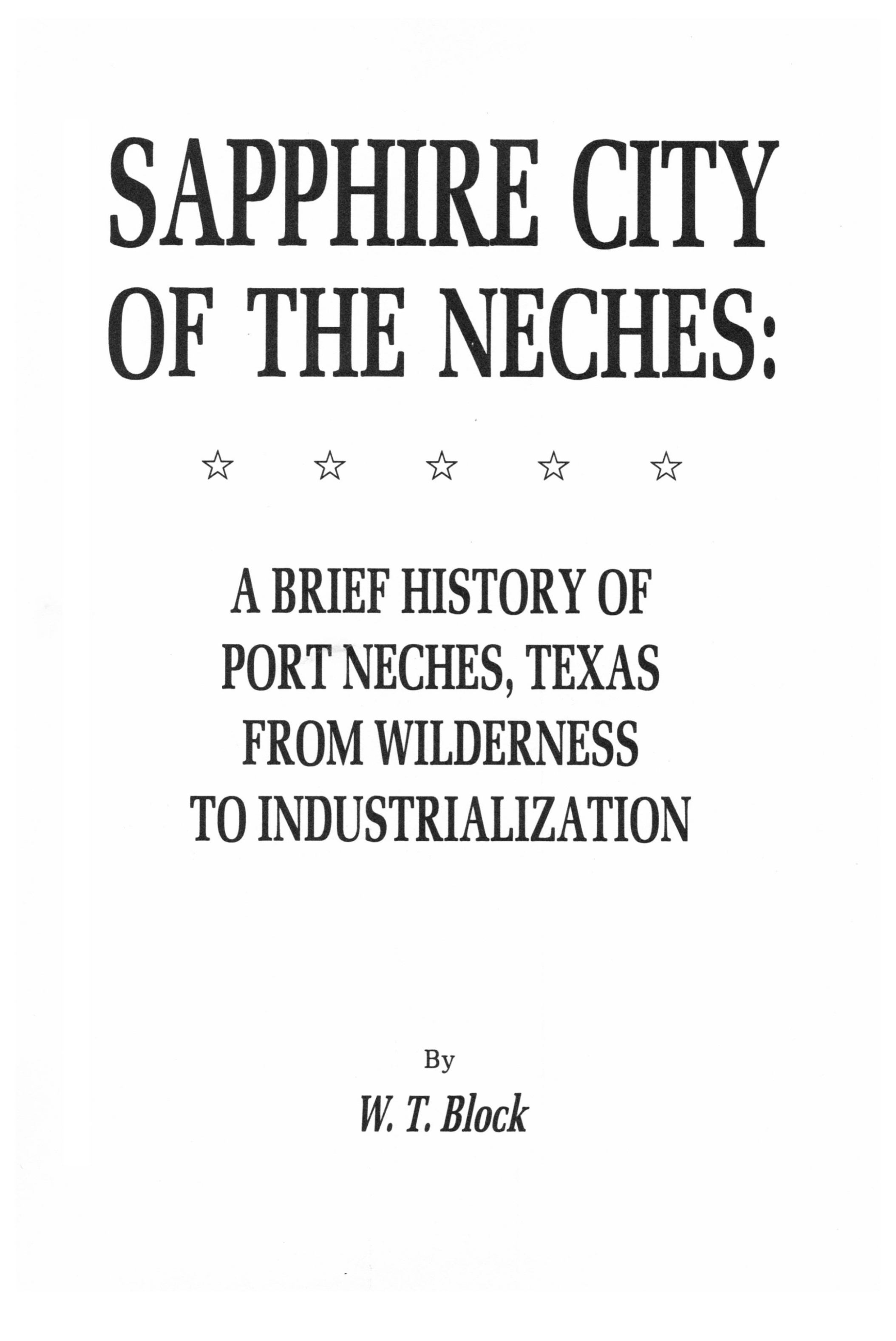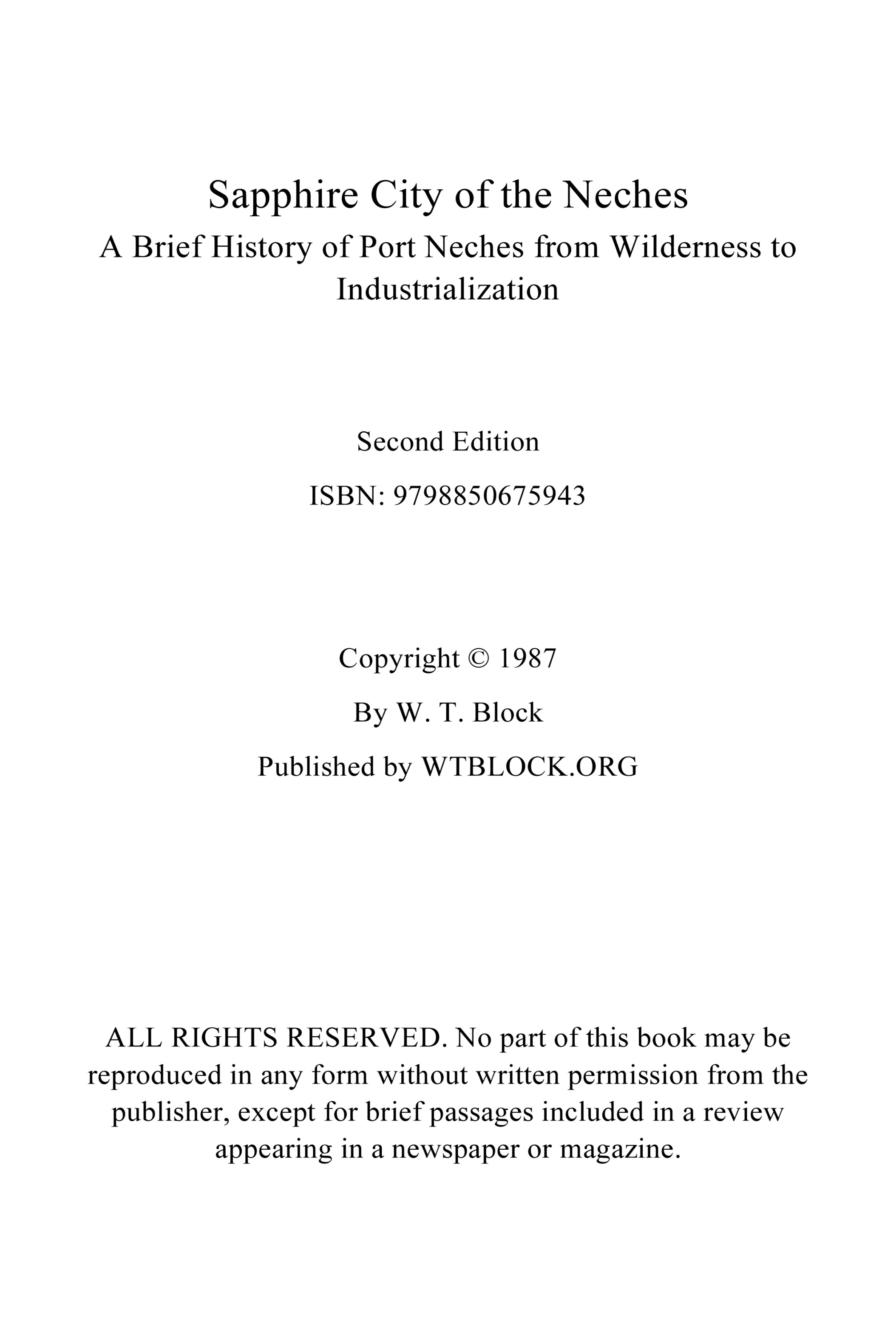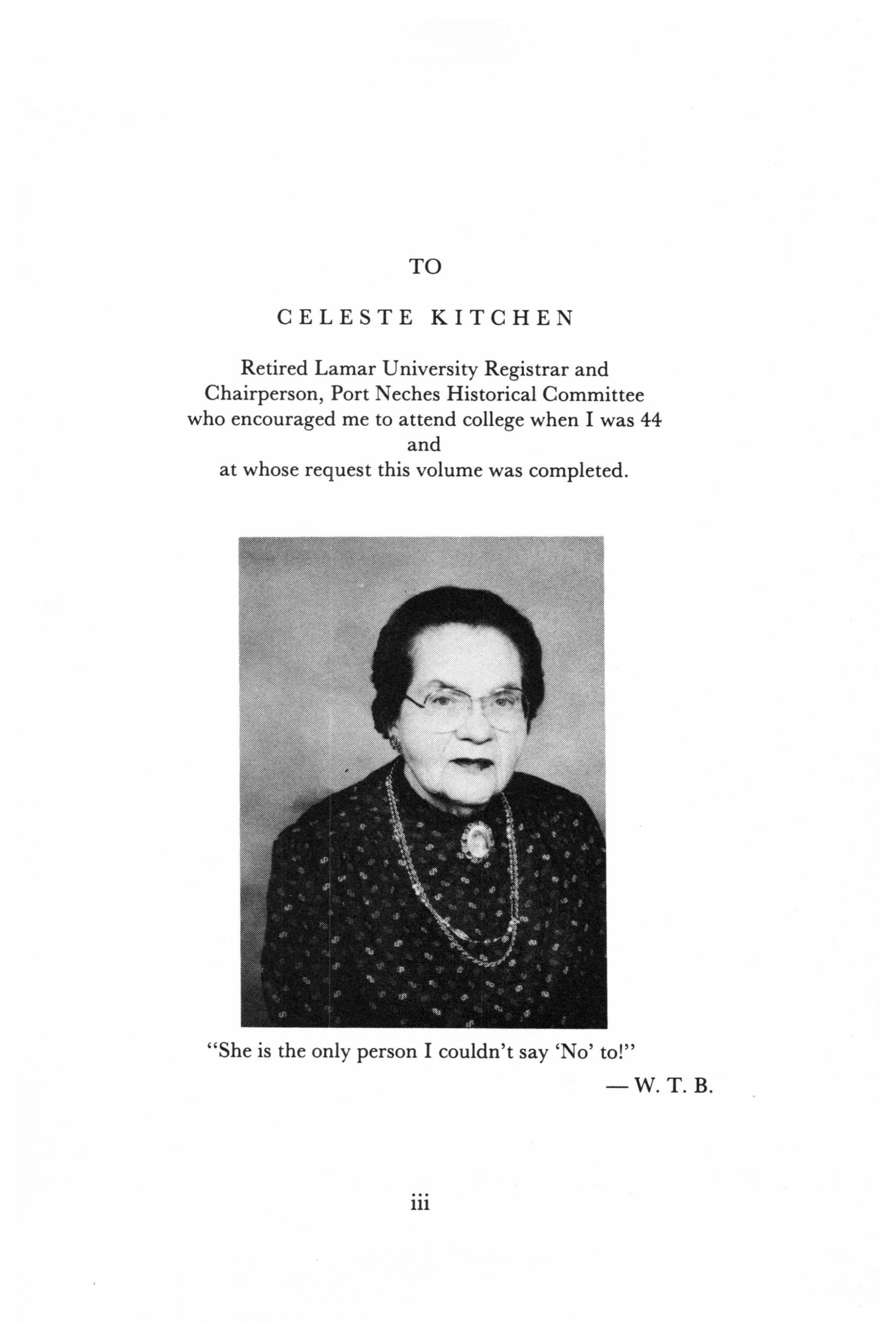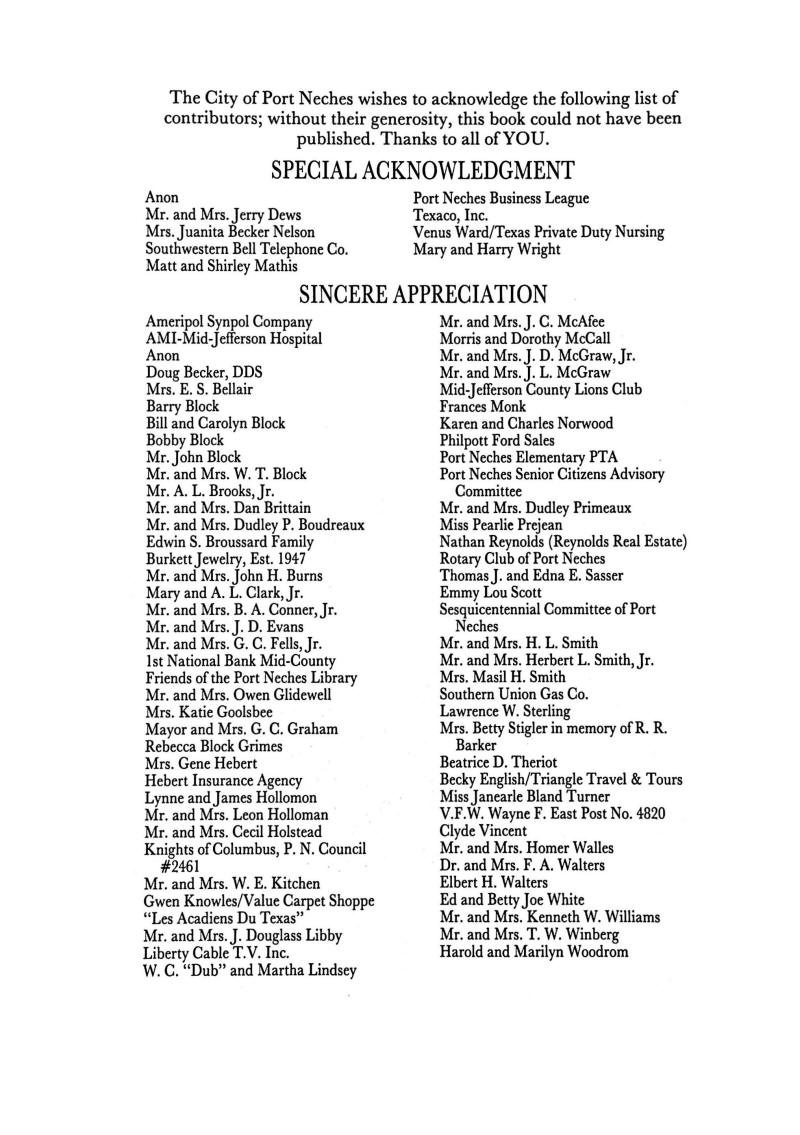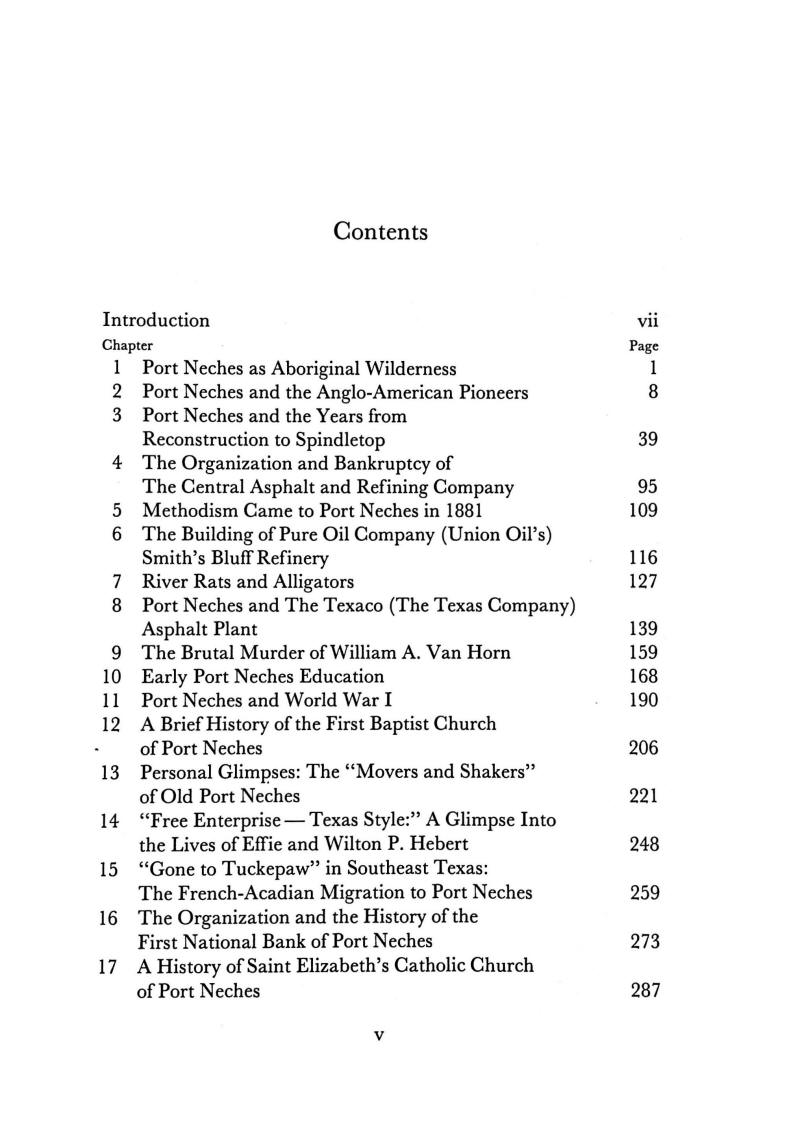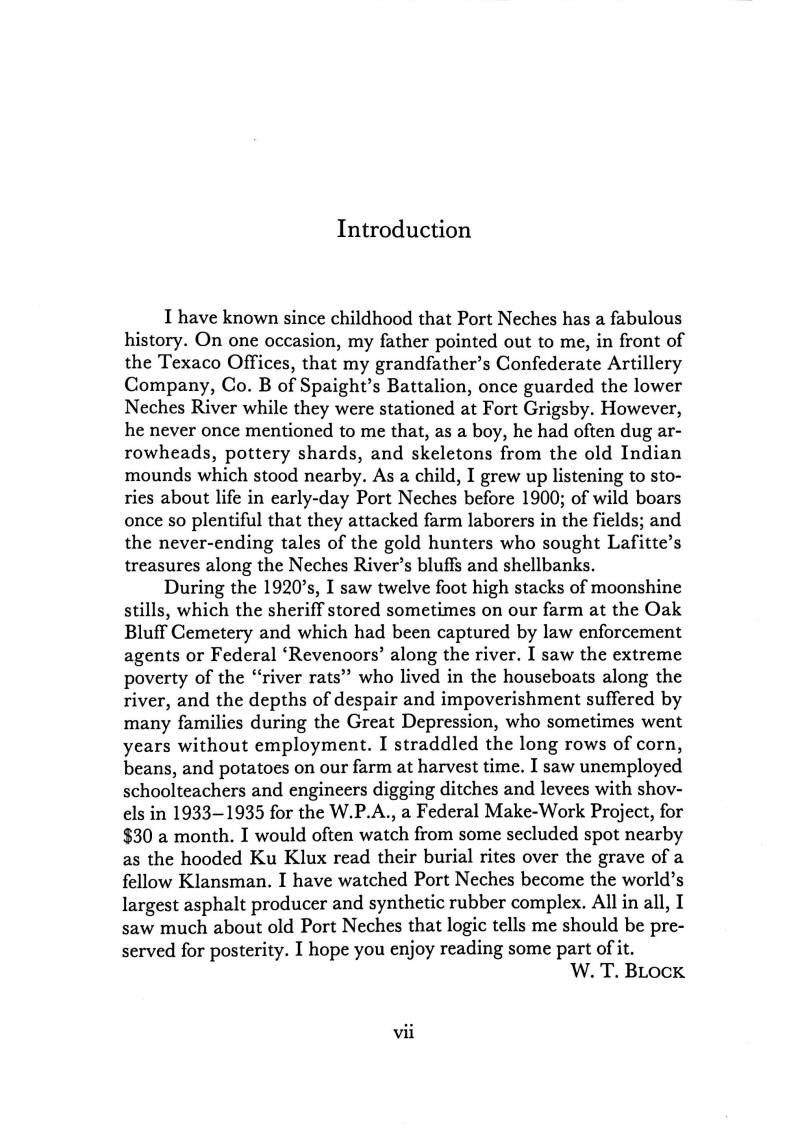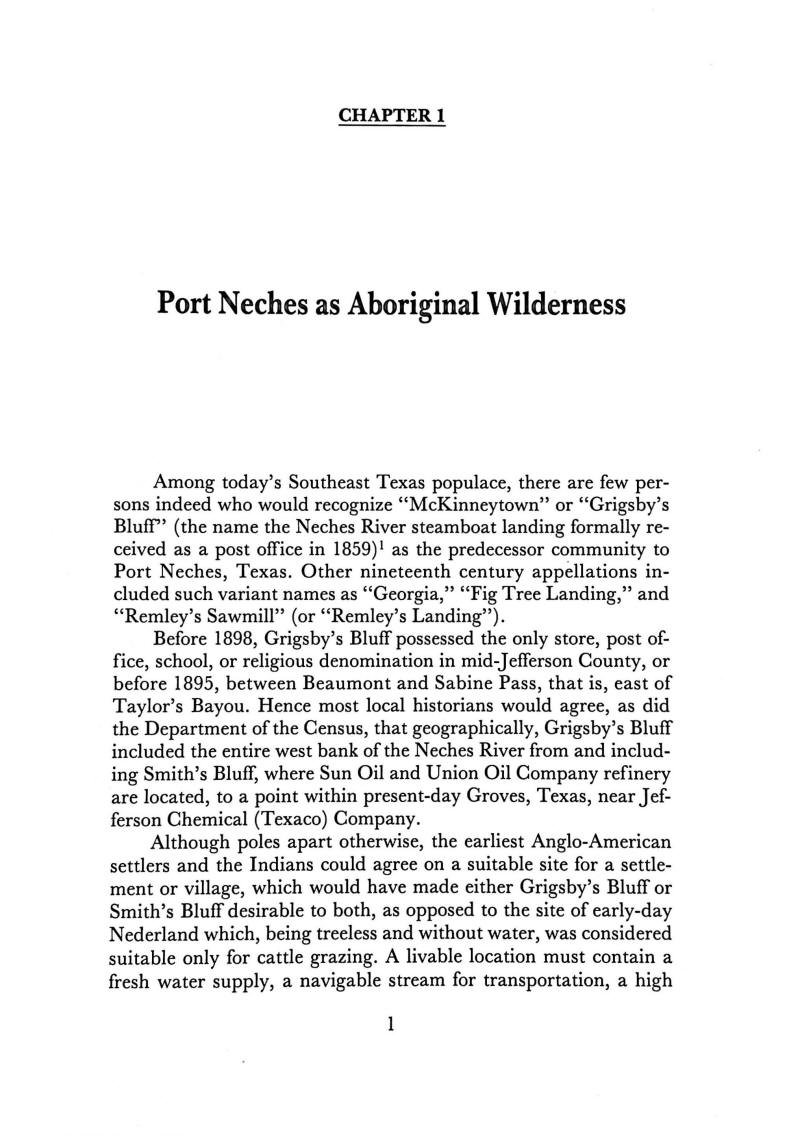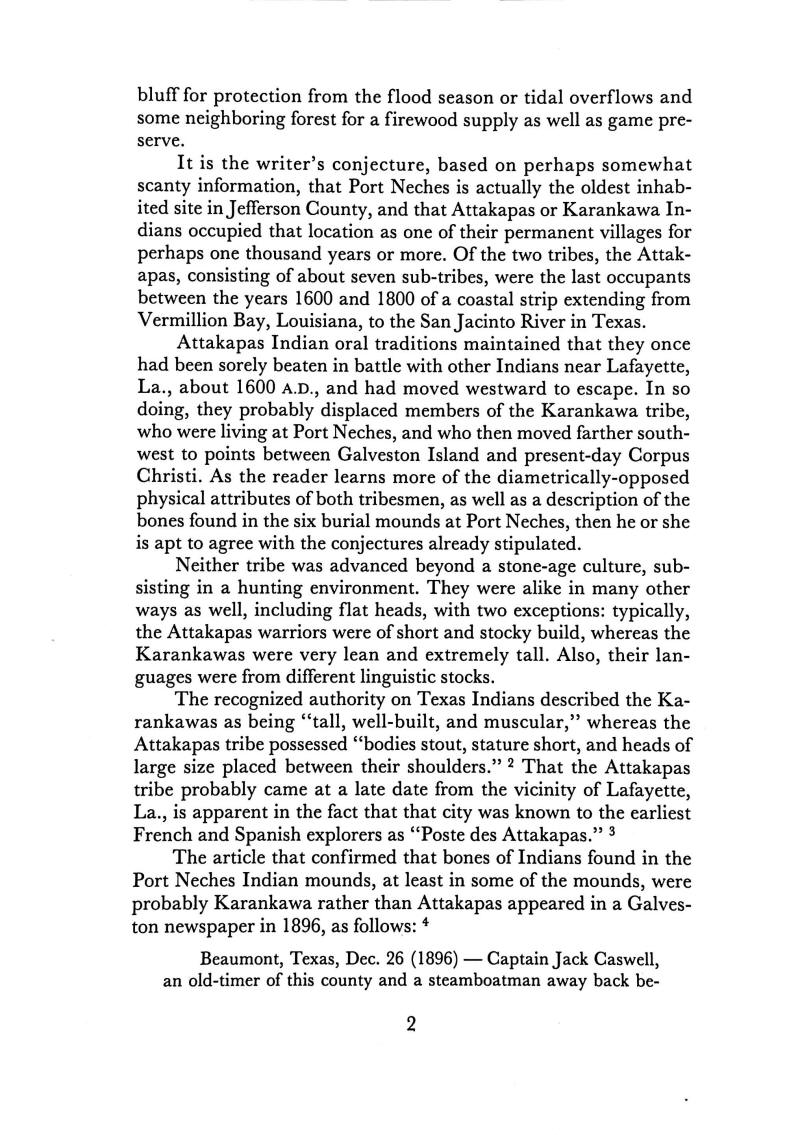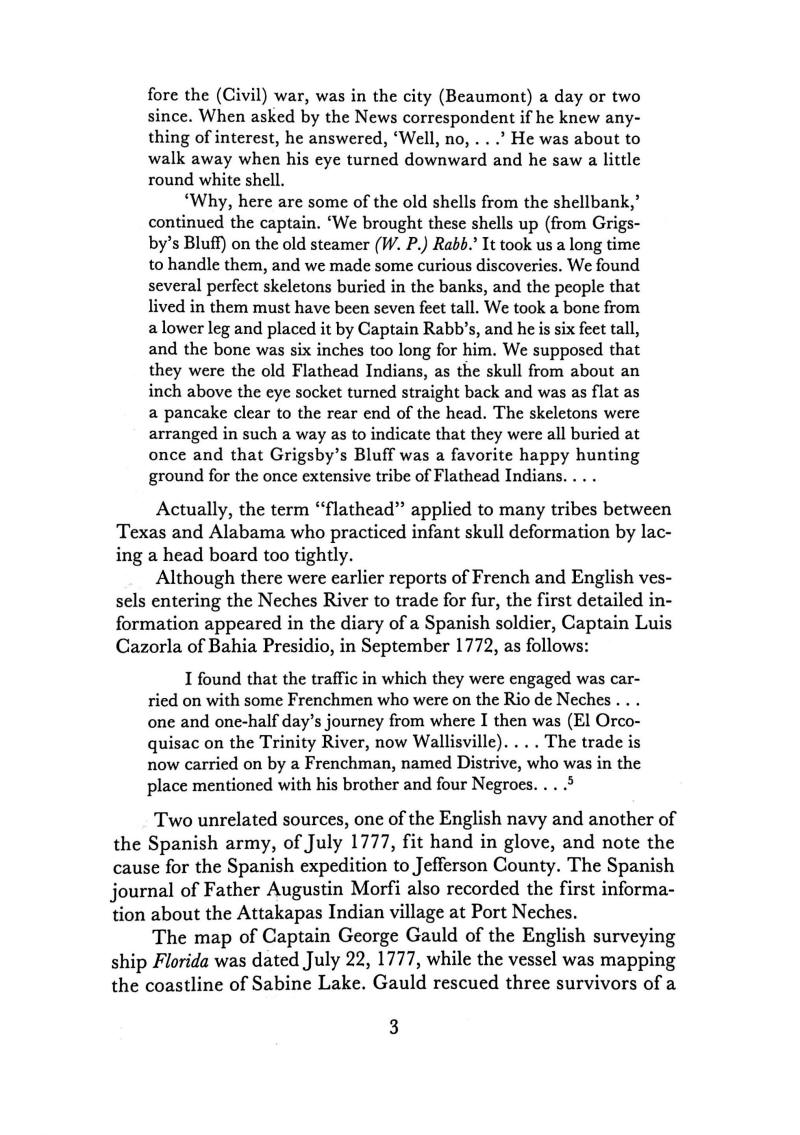I
have known since childhood that Port Neches has a fabulous history. On one
occasion, my father pointed out to me, in front of the Texaco Offices, that
my grandfather’s Confederate Artillery Company, Co. B of Spaight’s
Battalion, once guarded the lower Neches River while they were stationed at
Fort Grigsby. However, he never once mentioned to me that, as a boy, he had
often dug arrowheads, pottery shards, and skeletons from the old Indian
mounds which stood nearby. As a child, I grew up listening to stories about
life in early-day Port Neches before 1900; of wild boars once so plentiful
that they attacked farm laborers in the fields; and the never-ending tales
of the gold hunters who sought Lafitte’s treasures along the Neches River’s
bluffs and shell banks.
During the 1920’s, I saw twelve-foot-high stacks of moonshine stills, which
the sheriff stored sometimes on our farm at the Oak Bluff Cemetery, and
which had been captured by law enforcement agents or Federal ‘Revenoors’
along the river. I saw the extreme poverty of the “river rats” who lived in
the houseboats along the river, and the depths of despair and impoverishment
suffered by many families during the Great Depression, who sometimes went
years without employment. I straddled the long rows of corn, beans, and
potatoes on our farm at harvest time. I saw unemployed schoolteachers and
engineers digging ditches and levees with shovels in 1933-1935 for the W.P.A.,
a Federal Make-Work Project, for $30 a month. I would often watch from some
secluded spot nearby as the hooded Ku Klux read their burial rites over the
grave of a fellow Klansman. I have watched Port Neches become the world’s
largest asphalt producer and synthetic rubber complex. All in all, I saw
much about old Port Neches that logic tells me should be preserved for
posterity. I hope you enjoy reading some part of it.
The book
was written before WT had access to a computer so there are no original
computer files to use as a resource to recreate the book. To republished the
book, I scanned the book and published it as a "Print Replica"
in Amazon terms.
NOTE:
Print replicas are not fully functional as Kindle eBooks:
-
Not compatible with
Kindle e-reader (requires PC, Android, or iOS application to view).
-
Print Replica
versions are scanned images and the font size cannot be changed. Text in
these books can still be selected and searched on like the fully functional
Kindle versions.
The
following images represent the beginning of the book in order to see what
the scanned book looks like inside.
--William T. Block III (WT's son)
